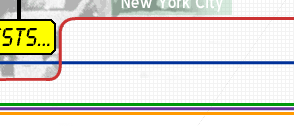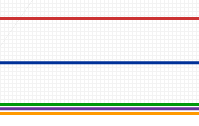



General Motors and You || The Secret History of General Motors || "Does the City Exist for People or for Motorcars?" || A Spiral Unto Death
Generating Traffic: A Legacy of Congestion
Robert Moses served New York City as Parks Commissioner from 1933 to 1959, and was bestowed with power over not only parks but also the roads and other constructions needed to access those parks. Moses expanded the definition of access to parks during his reign as Parks Commissioner and used his power to construct more than forty highways, expressways, parkways and bridges. His concept of parks was providing drivers with something pretty to look at while commuting. Although Robert Moses himself did not know how to drive, his power over New York City resulted in the dominating status of the automobile over mass-transit facilities in the city. He regarded the car as a source of pleasure rather than as a tool for city residents to move around in, and failed to see the necessity of a balanced system of transportation As a consequence, he used much of the city's resources for his luxury roads. Additionally, his creations or constructions affected the city for years. Building a highway in a crowded city is completely different than building a highway in open country. The cost of building within a city is so great and the difficulty in finding or making open space for construction so immense that finished products are there for the long haul, making planning one of the most important elements of city construction. Although Robert Moses was only one of the many planners employed by the city of New York, his reign over the city exemplifies New York's history of prioritizing cars over people while guiding the growth of the city without looking at the long term effects of his actions and no overall plan.
Before continuing, I must note that the majority of information for this article stems from Robert A. Caro's 1974 book The Power Broker: Robert Moses and the Fall of New York, and all quotations and information, unless otherwise noted, are from Caro.
Listening to Cars, Not PeopleRobert Moses' focus on the car as the primary means of transportation steered him away from hearing the residents of the communities in which he was planning construction, effectively destroying those communities with displacement and destruction. He displaced people from their homes in order to build highway entrance ramps, destroyed small businesses to add lanes, and ruined parks to create shoulders. In all, Moses displaced about 250,000 people from their homes to construct highways and "tore out the hearts of a score of neighborhoods,...the vital parts of the city that made New York a home to its people" (p.17). His construction ruined neighborhoods, and in those that were not totally destroyed, he ignored the needs of the residents changing their lives forever. Moses' roads favored only the automobile, not the vibrancy of city life, not the intricacies of its streets, and especially not its residents.
An illustrative example of Moses' effect on city neighborhoods is his construction of the Gowanus Parkway in the area of Sunset Park in Brooklyn. In the late 1930s, Sunset Park was a mostly working-class, immigrant neighborhood. Located on the waterfront in the southwestern area of Brooklyn, Sunset Park consisted of a residential section and an industrial area near the waterfront. The majority of Sunset Park's businesses were located on Third Avenue, one of the larger roads running north and south through the neighborhood. A subway line had run on an elevated track over Third Avenue for many years but had since been discontinued. With the subway, the avenue had become a major thoroughfare for commuters, and even after its service was discontinued, the avenue remained the center of commerce of the neighborhood.
When Robert Moses set his eye on the area, he saw the potential for a link from northern Brooklyn and Manhattan to southern Brooklyn for automobiles but failed to see the important, lively commercial center on Third Avenue. In addition to a link for cars, he also saw a future route for trucks to drive from the Brooklyn Battery Tunnel southward on the road below the planned expressway but not the residents of Sunset Park walking on those streets. As Lewis Mumford wrote in New Yorker magazine in 1959, "what is Brooklyn to the highway engineer -- except a place to go through rapidly, at whatever necessary sacrifice of peace and amenity by its inhabitants?" For Robert Moses, the neighborhood of Sunset Park in Brooklyn was just an effective location for automobiles and trucks to pass through.
Moses replaced the elevated subway tracks over Third Avenue with the Gowanus Expressway and converted the four lanes of Third Avenue into a ten-lane highway for trucks. He failed to examine how residents of the neighborhood used their streets and placed a major thoroughfare in the middle of their commercial district. Instead of running the expressway over the commercial area of Third Avenue, Moses could have planned the expressway one block over on Second Avenue, an industrial area, where it would have done less damage. The difference in cost would have been minimal. Despite the complaints and vocal fears of community residents, Moses continued with his plan. The expressway killed the life on Third Avenue, the heart of Sunset Park, destroying buildings and making travel through the streets depressing and even life-threatening -- all for a highway that was for the use of car and truck drivers, the majority of whom were commuting from outside the neighborhood.
The damage the Gowanus caused to Third Avenue was irreparable. The Gowanus Expressway was fifty-four feet wider than the elevated subway tracks, creating a large shadow over the street below. In order to build entrance and exit ramps for the highway, homes had to be destroyed. Moreover, to build the ten-lane highway for trucks below the expressway, "every building on one side of Third Avenue between Thirty-ninth and Sixty-third streets was torn down" (p.522). This new truck route was essentially impossible for pedestrians to cross. Third Avenue, once the center of commerce and life for the residents of Sunset Park, was transformed into a "physical barrier" (p.523). The shadow, the noise from the traffic, the exhaust, and the danger kept people away from the street and out of the stores. Businesses closed and Third Avenue's main function changed from a center for neighborhood residents into a thoroughfare for cars and trucks. The transformation of Third Avenue blocked the waterfront from the streets further east cutting off the residents from the river. Access to the river and all of its possibilities would be forever hindered by these new roads.
For any highway to be built in a city, homes and businesses may be destroyed. Neighborhoods are drastically transformed by construction, yet this process of change can occur with varying amounts of destruction to the surrounding geographical community. With the Gowanus Parkway and the majority of other roads constructed under Moses, the amount of harm perpetrated on the surrounding neighborhoods was immense because of the focus on the car rather than the city resident. With every highway or bridge built under Moses thousands of people were displaced from their homes and their neighborhoods changed forever. "More significant even than the number of the dispossessed were their characteristics: a disproportionate share of them were black, Puerto Rican -- and poor" (p.20). And the main groups of people that benefited from of all of his road construction were the "upper and middle classes-suburbanites...that could afford to own an automobile" (p.760), not the residents living where Moses' expressways were built. The people who benefited from Robert Moses' highways and bridges were people who could afford cars and did not have to rely on other means of transportation. Those most affected by his road construction did not have the means to relocate to other neighborhoods so easily.
Furthermore, Moses, with so much road and bridge construction, needed funding from somewhere. The money used to build Moses' highways was city and federal money set aside for city projects. Money spent on improving transportation through highways and bridges was not being spent on schools or hospitals or libraries or police stations or sewers or firehouses and especially not on subways and alternatives to the automobile.
Back to top